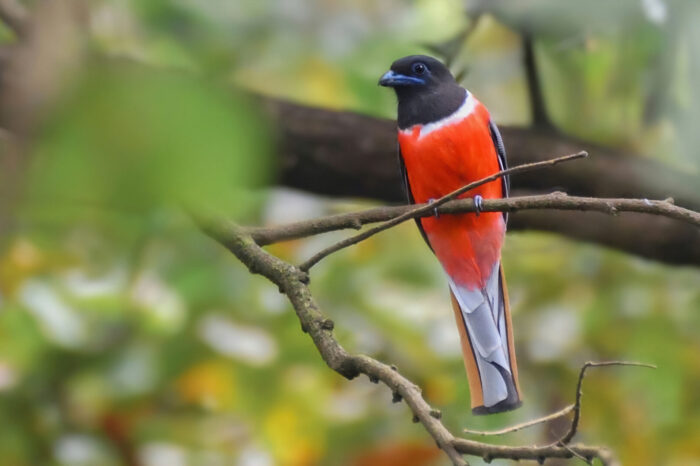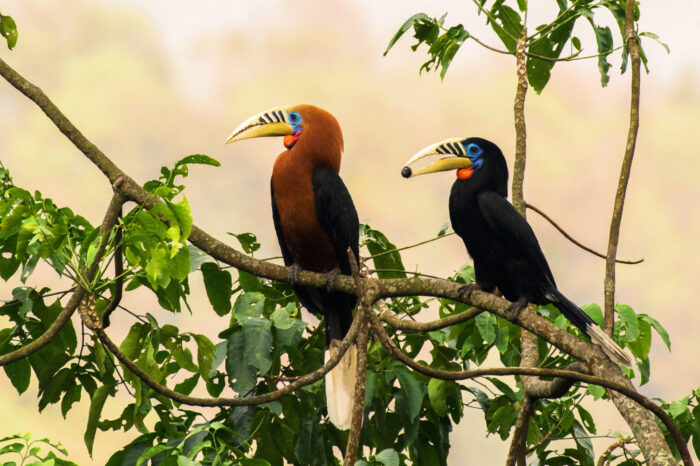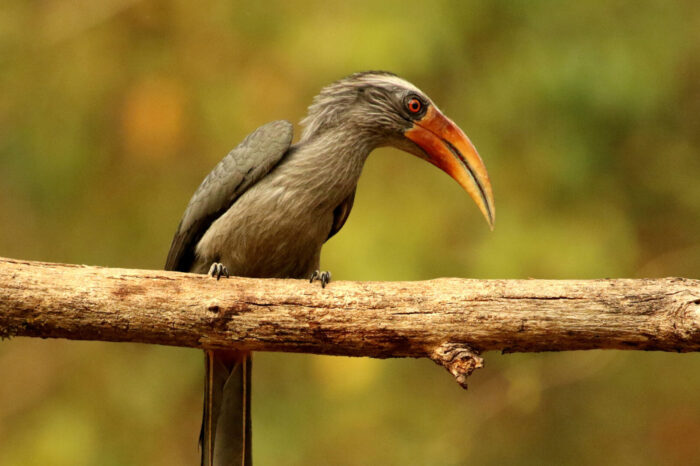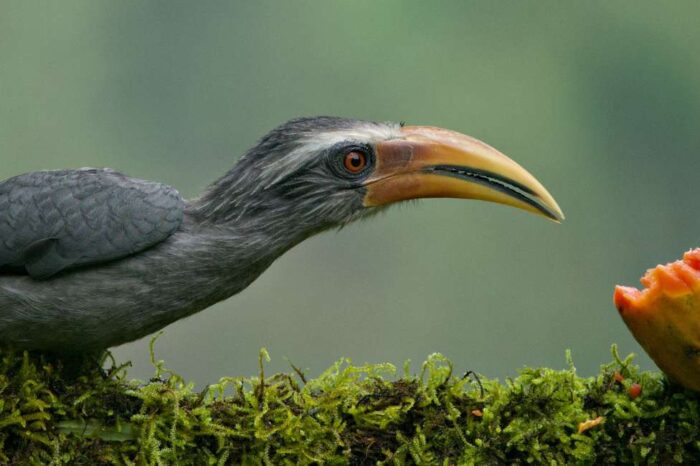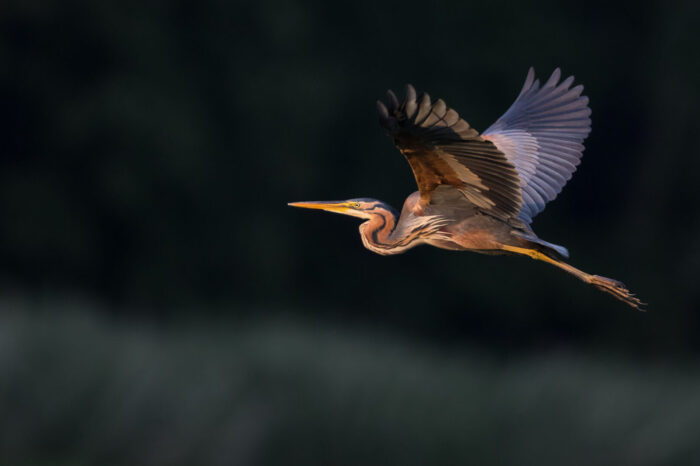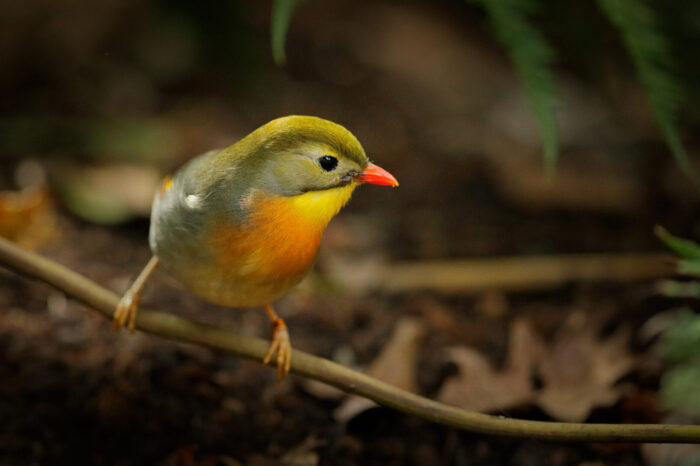- Home
- INDIA
- Offbeat India
- International
- Theme Tours
- Blogs
- Case Studies
- Plan Your Trip
Birdwatching Tour
Birdwatching Tour
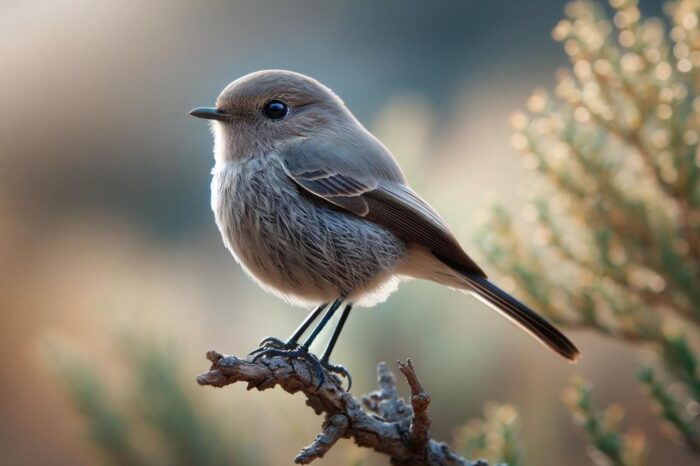
2N/3D Shitlakhet Birding Tour
Variety of Bird Species, Syahi Devi Temple,Anant Rasa, Pine & Oak Forests,
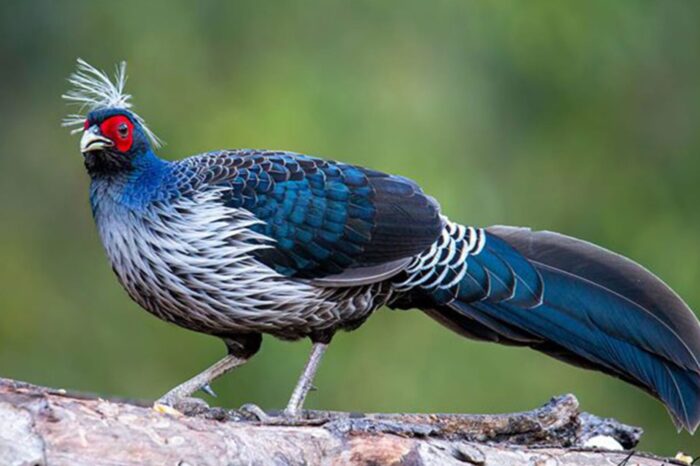
2N/3D Pangot Birding Tour
Pangot Nala, Brown wood owls, Woodpecker Point, Bird Watching, Kilbury Forest, Timla Pani
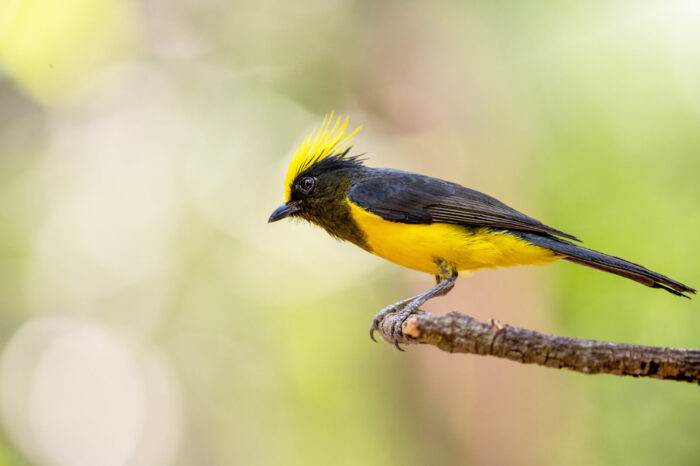
4N/5D Pangot & Sattal Birding Tour
Woodpecker Point, Chafi village, Naina Devi Bird Reserve, Sattal Forest
A Birdwatching Tour is your gateway to nature’s vibrant melodies and stunning avian wonders. Venture into serene landscapes, from lush forests to tranquil wetlands, as you spot exotic bird species in their natural habitats. Perfect for nature lovers and photography […]
A Birdwatching Tour is your gateway to nature’s vibrant melodies and stunning avian wonders. Venture into serene landscapes, from lush forests to tranquil wetlands, as you spot exotic bird species in their natural habitats. Perfect for nature lovers and photography enthusiasts, this tour offers an unforgettable experience of connecting with wildlife and appreciating the beauty of diverse birdlife. Whether you’re a seasoned birder or a curious traveler, a Birdwatching Tour promises tranquility, discovery, and awe-inspiring moments in nature’s lap.
Feathered Wonders: A Journey Through Birding Hotspots
Introduction to Birdwatching Tours
Bird watching, or birding, is more than a pastime; it’s a portal to a world of vibrant colours, melodious songs, and the graceful dance of avian life. Across continents, from the dense forests of the Amazon to the rugged landscapes of the Himalayas, birding hotspots beckon enthusiasts eager to glimpse the feathered treasures they harbour. This guide is your companion through these locales, unravelling the mysteries and joys of bird watching.
Destination Spotlight: India’s Premier Birding Sites
Coorg: A Birdwatching Tour in Karnataka’s Serene Landscapes
Nestled in the lush Western Ghats of Karnataka, Coorg is a dream destination for birdwatching tours. Its diverse terrain of rainforests and coffee plantations is home to exotic birds such as the Malabar Trogon and the Nilgiri Wood Pigeon. Popular birdwatching spots like Pushpagiri and Brahmagiri Wildlife Sanctuaries showcase high-altitude species that captivate bird enthusiasts. Coorg’s commitment to conservation and its vibrant Kodava heritage enrich every birdwatching tour, making it more than just an observation—it’s an immersion into nature and culture.
Mangalajodi: A Birdwatching Tour of Conservation Triumph
On the banks of Odisha’s Chilika Lake lies Mangalajodi, a testament to community-driven conservation. Once a hub for bird poaching, it has transformed into a paradise for birdwatching tours. Thousands of migratory birds, including the Black-tailed Godwit and Ruddy Shelduck, flock to its marshlands and reed beds. Guided by reformed poachers, these tours not only offer incredible sightings but also support local conservation efforts. As part of Asia’s largest brackish water lagoon, Mangalajodi highlights the power of education and sustainability in preserving biodiversity.
Latpanchar: Himalayan Birdwatching Tours at Their Best
Set in West Bengal’s Himalayan foothills, Latpanchar is a rising star in the world of birdwatching tours. Located within the Mahananda Wildlife Sanctuary, it is renowned for its sightings of the rare Rufous-necked Hornbill, along with the Blue-throated Barbet and Red-tailed Minla. Latpanchar’s success story as a community-led conservation area exemplifies how birdwatching tours can contribute to preserving biodiversity while fostering sustainable tourism and economic growth for local communities.
Kerala’s Treasures: Birdwatching Tours in Thattekkad and Periyar
Kerala’s Thattekkad and Periyar Bird Sanctuaries are iconic destinations for birdwatching tours. Thattekkad, known as South India’s richest bird habitat, is home to over 300 species, including the Malabar Grey Hornbill and Sri Lanka Frogmouth. Periyar, a tiger reserve, features more than 320 bird species like the Nilgiri Wood Pigeon and Malabar Parakeet. Both sanctuaries exemplify successful conservation efforts, offering visitors a chance to experience Kerala’s enchanting landscapes while exploring its vibrant avian life on dedicated birdwatching tours.
Pangot and Sattal: Himalayan Birdwatching Tours in Uttarakhand
In Uttarakhand’s Himalayan foothills, Pangot and Sattal are prime destinations for birdwatching tours. Pangot’s serene forests of oak and rhododendron are home to over 250 species, including the Cheer Pheasant and Himalayan Griffon. Nearby, Sattal’s interconnected lakes host over 500 species, such as kingfishers, woodpeckers, and barbets. These tranquil regions not only offer incredible birdwatching tours but also play a crucial role in conservation and ecotourism, ensuring that the rich avian diversity is preserved for future generations.
Arunachal Pradesh: Birdwatching Tours in Sessa and Mandala
Nestled in the Eastern Himalayas, Arunachal Pradesh’s Sessa Orchid Sanctuary and Mandala Phudung Forest Region are perfect for adventurous birdwatching tours. Sessa’s diverse landscapes are home to species like the Nuthatch and Red-Headed Trogon, while Mandala offers sightings of the Fire-tailed Myzornis and Beautiful Sibia. These regions are not only biodiversity hotspots but also significant conservation areas, offering birdwatching tours that provide rare sightings and contribute to preserving unique ecosystems.
Borong: Birdwatching Tours in Sikkim’s Tranquil Heights
Perched at an altitude of 5,800 feet in South Sikkim, Borong is an emerging gem for birdwatching tours. Its diverse habitats are home to the Himalayan Monal, Satyr Tragopan, and Rusty-bellied Shortwing. With its serene landscapes and cultural richness, including the nearby Ralong Monastery, Borong combines birdwatching tours with opportunities for cultural exploration and sustainable tourism, making it a retreat for both nature lovers and conservationists.
Winged Journeys: Traversing India’s Birding Trails
An Introduction to Birding in India
The Allure of Birdwatching in India: India’s unique appeal as a bird watching destination, emphasising its rich avifauna and diverse landscapes.
A Brief History of Birdwatching in India: Touch on the evolution of birdwatching in India, including contributions by famous ornithologists like Dr. Salim Ali.
The Best Times for Birdwatching in India
The best times for birdwatching in India vary by region, winter months (November to February) are ideal for spotting migratory birds in the wetlands and plains, while the pre-monsoon period (April to June) is perfect for high-altitude species in the Himalayas and the lush Western Ghats.
Conservation and Community in Indian Birdwatching
In India, the intertwining of birdwatching with conservation and community development has been gaining momentum. Bird habitats, ranging from the Himalayan highlands to the coastal mangroves, face threats like habitat loss and climate change. Recognizing this, numerous conservation initiatives have been implemented. These efforts often involve habitat restoration, species monitoring, and creating protected areas, significantly aided by birdwatching activities that raise awareness and generate valuable data on bird populations and behaviour.
Birdwatching also plays a crucial role in empowering local communities. In regions like the Northeast and the Western Ghats, communities have transformed into guardians of their local ecosystems. By engaging in ecotourism and birdwatching tours, these communities find sustainable livelihoods, which in turn motivates them to preserve their natural heritage. This shift has led to the growth of community-run homestays, local guides knowledgeable in ornithology, and conservation education programs, creating a symbiotic relationship between tourism, conservation, and community welfare.
In sanctuaries like Thattekkad in Kerala and Sattal in Uttarakhand, community involvement has been pivotal. Local expertise not only enhances the birdwatching experience for tourists but also ensures that tourism activities do not disrupt the ecological balance. These models demonstrate how responsible birdwatching can contribute to both the protection of avian species and the socio-economic development of local communities, paving the way for a more sustainable future in wildlife tourism.
Cultural Experiences and Birdwatching
Birdwatching in India offers a unique opportunity to blend the exploration of diverse avian species with immersive cultural experiences. In regions rich in birdlife like Rajasthan, Goa, or the Northeast, birdwatching often goes hand-in-hand with experiencing India’s vibrant traditions and history. Visiting bird sanctuaries and nearby cultural landmarks allows birdwatchers to understand the local heritage and community’s connection with nature. Local communities play a pivotal role in this integration. By serving as guides, sharing folklore and traditional knowledge about birds, and participating in conservation efforts, they bridge the gap between cultural heritage and natural history. This involvement not only enriches the birdwatching experience for tourists but also fosters a sense of pride and stewardship within the community, leading to more sustainable and responsible bird conservation practices. This synergy between birdwatching and cultural engagement not only enhances the tourism experience but also supports the preservation of both natural and cultural legacies.
Tracing Bird Trails: Dr. Salim Ali’s Contributions to Ornithology / Exploring India’s Skies: Dr. Salim Ali’s Ornithological Journey
Dr. Salim Ali, revered as the “Birdman of India,” was a pioneering ornithologist whose extensive research and birding tours significantly contributed to the field of bird study in India. Born in 1896, Dr. Ali’s fascination with birds began in childhood and led to a lifetime dedicated to ornithology. His seminal work, “The Book of Indian Birds,” became a cornerstone for bird enthusiasts and researchers alike, introducing many to the joys and intricacies of birdwatching.
Dr. Ali’s birding tours and research expeditions spanned across the diverse landscapes of India. His tireless fieldwork laid the foundation for systematic bird study in the country. Notably, his involvement in the Bombay Natural History Society (BNHS) was instrumental in promoting ornithological studies and conservation initiatives. Dr. Ali’s surveys in various parts of India, especially in the princely states and remote areas, were crucial in documenting India’s avian diversity.
His dedication to the study of birds wasn’t just scientific; he was deeply passionate about conservation. Dr. Ali played a vital role in the creation of several bird sanctuaries and national parks across India. His advocacy for bird conservation had a lasting impact on India’s environmental policies. Dr. Ali’s legacy continues to inspire ornithologists and birdwatchers globally, making him a legendary figure in the world of bird conservation and study.
Success Stories in Avian Conservation
India has witnessed several success stories in avian conservation, demonstrating the impact of dedicated efforts. A notable example is the comeback of the Indian Vulture, which faced near extinction due to the use of the drug Diclofenac in livestock. Intense conservation programs, including a ban on the drug and the establishment of vulture breeding centres, have helped in stabilising their populations.
Another success is the conservation of the Great Indian Bustard, one of India’s most endangered birds. Initiatives like Project Great Indian Bustard focus on protecting its dwindling habitats in Rajasthan and Gujarat, leading to a gradual increase in their numbers.
The Amur Falcon’s story in Nagaland is particularly inspiring. Once victims of mass hunting during their migration, these raptors are now celebrated annually in the ‘Amur Falcon Festival.’ This turnaround is credited to community-driven conservation efforts and awareness campaigns, transforming the region into a safe passage for these migrating birds. These examples highlight the potential of focused conservation strategies and community involvement in preserving India’s rich avian heritage.
Birding with Locals: Enhancing the Avian Adventure and Supporting Communities
Local guides are integral to birdwatching, offering essential expertise that significantly elevates the experience. With their deep knowledge of the terrain and bird behaviour, these guides provide invaluable insights into the best spots and times for bird sightings, often uncovering hidden avian treasures. Their familiarity with local bird calls and habitats enhances the likelihood of observing rare species. Additionally, hiring local guides fosters economic benefits for their communities, promoting sustainable livelihoods. This, in turn, motivates community-led conservation efforts, as locals become active guardians of their natural heritage. Thus, local guides not only enrich the birdwatching journey but also play a crucial role in community empowerment and environmental stewardship.
India’s Avian Kaleidoscope: Exploring Bird Diversity Across Habitats
Birdwatching Tour in India offers a captivating lens through which to explore the country’s rich avian diversity and cultural tapestry. India’s varied habitats, from the Himalayan foothills to coastal wetlands, provide shelter to a staggering array of bird species. In the pristine wetlands, one can encounter elegant waders like the Painted Stork and the Asian Openbill, while the dense forests harbour elusive treasures like the Indian Pitta and the resplendent Malabar Trogon. The Western Ghats, a biodiversity hotspot, host endemic wonders like the Nilgiri Wood Pigeon and the vibrant Malabar Grey Hornbill. Each region unveils a unique avian tableau, making India a birdwatcher’s paradise.
Furthermore, birds are deeply interwoven into India’s cultural fabric and folklore. In Hindu mythology, birds often symbolise deities or have divine significance, such as the Garuda, the celestial bird mount of Lord Vishnu. Birds find mention in classical Indian poetry, like Kalidasa’s “Shakuntala,” where the koel’s melodious call evokes themes of love and longing. The peacock, India’s national bird, is revered in various regional traditions. Understanding these cultural connections adds a layer of depth to the birdwatching experience, where every sighting becomes a glimpse into India’s intricate heritage.
Birdwatching Tour in India is not just about spotting birds; it’s an immersive journey that celebrates the nation’s ecological and cultural wealth. It’s an exploration of biodiversity intertwined with age-old stories and beliefs, making it a holistic and enlightening experience for bird enthusiasts.
Prioritising Health and Logistics: A Smart Start to Birdwatching in India
Embarking on birdwatching Tours in India requires thoughtful preparation and the right equipment to ensure a rewarding experience.
Research and Planning:
Understanding the region’s climate, seasons, and prevalent bird species is crucial for a successful birding Tour. This research allows you to plan your visit during the optimal birding season.
Health Precautions:
Depending on the region, you might require vaccinations or medications to prevent illnesses. Consulting a healthcare professional for advice is advisable.
Logistical Considerations:
Choosing accommodations near birding hotspots saves travel time and increases the time available for birding Tour. Hiring local guides familiar with the area enhances your birding experience.
Essential Birding Gear:
Good binoculars, a field guidebook specific to Indian birds, and appropriate clothing are essential. Additional gear like a spotting scope and camera can enhance your birdwatching capabilities.
Wings and Ethics: The Art of Responsible Birdwatching Tour
Respect for Wildlife and Habitats:
The cardinal rule of birding ethics is to prioritise the welfare of birds and their environments. Keep a safe distance from nests and roosting areas to avoid causing distress or abandonment. Never approach birds in a way that disrupts their natural behaviour.
Avoid Disturbance:
Birdwatchers should minimise any form of disturbance, whether it’s loud noises, sudden movements, or excessive use of playback calls. The objective is to observe birds without causing undue stress or interruption.
Stay on Designated Trails:
When exploring birding areas, it’s vital to stick to established trails and paths. Avoid trampling on fragile vegetation, as it can harm both plants and the insects that birds depend on for food.
Litter-Free Birdwatching:
Carry out all litter, including food wrappers and plastic bottles. Litter can negatively impact bird habitats and pose a threat to wildlife.
Respect Private Property and Regulations:
Be aware of landownership and respect private property. Always adhere to local rules and regulations, including entry fees and permits for protected areas.
Share Knowledge Responsibly:
Sharing bird locations with other birdwatchers is encouraged, but it should be done judiciously. Avoid overcrowding sensitive birding sites, especially during breeding seasons.
Support Conservation:
Engage in conservation efforts by participating in citizen science projects, reporting unusual bird behaviours, and supporting organisations dedicated to avian conservation.
Why Birdwatch in India?
Birdwatching in India offers an unrivalled blend of natural wonders and cultural richness. With over 1,300 bird species, including endemics like the Indian Peafowl and rare species like the Indian Pitta, India’s avian diversity is a marvel to behold. The country’s diverse landscapes, from lush forests to arid deserts, provide varied habitats for these feathered wonders. Moreover, India’s deep-rooted birdwatching culture welcomes enthusiasts with open arms, making it a warm and inviting community to be a part of.
India’s ornithological legacy is equally captivating. It boasts a rich history of ornithology, with pioneering figures like Dr. Salim Ali, whose contributions are celebrated globally. Exploring India’s birdlife is not just about observing birds but immersing oneself in a world where nature and culture intertwine seamlessly, making it a must-visit destination for birdwatchers worldwide.
Wings of Hope: India’s Bird Conservation Triumphs/ Conserving India’s Avian Treasures: Challenges and Achievements
India’s Bird Conservation Initiatives encompass a diverse range of projects aimed at safeguarding the country’s avian treasures.
Successful Conservation Projects:
Conservation programs, including the ban on the drug Diclofenac, have played a pivotal role in preventing the decline of these critically endangered birds.
Community Participation:
Community-led projects, like the protection of Amur Falcons in Nagaland, have demonstrated that involving local residents can be a powerful force for conservation.
Challenges in Bird Conservation:
Rapid urbanisation and habitat degradation threaten avian habitats, while climate change disrupts migration patterns. Illegal trade in birds and their products remains a concern.
Role of Birdwatchers:
Birdwatchers can contribute by participating in citizen science projects, supporting local conservation organisations, and promoting ethical birdwatching. Birdwatchers’ observations provide valuable data for researchers. Their active involvement can raise awareness and funds for conservation efforts.
Government Initiatives:
India’s government has launched initiatives like Project Great Indian Bustard. These initiatives focus on habitat conservation and are crucial for protecting endangered species.
Conclusion
In summary, embarking on a birdwatching Tour in India is an immersive journey that offers a unique blend of natural beauty and cultural richness. India’s geographical diversity, spanning from the Himalayan mountains to coastal wetlands, presents an unparalleled range of avian species waiting to be discovered. The deep-rooted birdwatching culture in the country provides a warm and welcoming community for enthusiasts.
India’s ornithological history, enriched by luminaries like Dr. Salim Ali, adds depth to the birdwatching experience. Exploring this vast nation unveils not only the stunning array of birdlife but also the intricate relationship between birds and Indian culture.
Moreover, India’s commitment to bird conservation and the active involvement of local communities enhance the significance of birdwatching tour. Birdwatchers by supporting conservation initiatives and practising ethical birdwatching.
In essence, birding in India is an exploration of nature’s wonders intertwined with a tapestry of cultural heritage. It is an educational and enlightening journey that not only gratifies the senses but also fosters a deeper connection with the environment and the communities that cherish it.ot only witness the marvels of Indian birds but also contribute to their protection
Experiences
- Chanderi SilkNovember 28, 2025
- Waterfalls of ChhattisgarhOctober 29, 2025
- Tribals of ChhattisgarhAugust 12, 2025
- Jewellery and Handicrafts of ChhattisgarhAugust 12, 2025
- Heritage Properties of ChhattisgarhAugust 12, 2025
- Chanderi Silk
Call
98742 84569
98743 61951
Mon-Sat 11.00AM-07.30PMNewsletter
Rate & Review Us
Contact Info
- +91 98742 84569
- experience@ocean6.in
- 16, Suren Tagore Rd, Ekdalia, Ballygunge, Kolkata, West Bengal 700019
- Mon - Sat : 11.00 AM - 7.30 PM
Sunday : CLOSED
Newsletter
Quick Links


